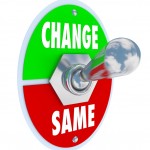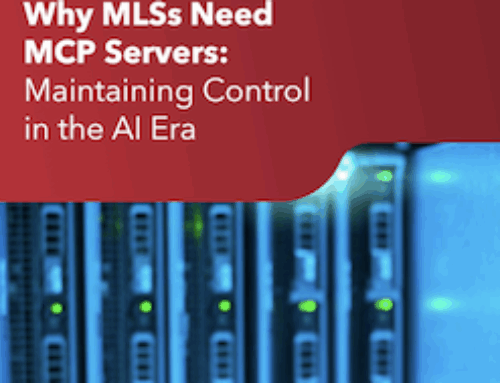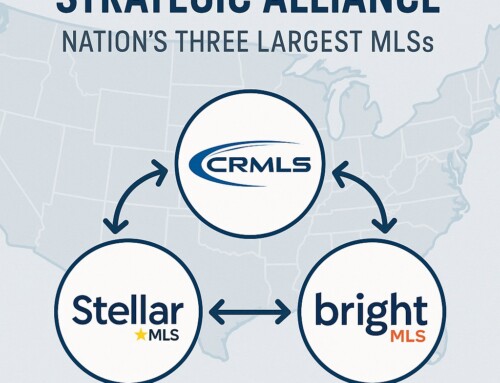I had the pleasure of speaking at the Broker Summit put on by the Michigan Association of REALTORSâ this week in Detroit, Michigan. The topic I was asked to speak on was the “Future of Real Estate”, just a small topic right? But this was really a fun topic because it gave me an opportunity to talk about some significant changes I have witnessed over the years impacting our industry, like the change in the broker/agent relationship, changes in technology and the changing role of the consumer and what these changes mean for our future. In this post I don’t want to repeat my talk but I do want to touch on one of the topics I addressed, the whole notion of change. I asked the audience the following question:
Are people really resistant to change?
As you might guess, almost everyone either said yes, or shook their head up and down and smiled, since we all know that people are naturally resistant to change, right? Wrong! Actually people aren’t resistant to change at all. We change all the time, everyday, in many ways and our lives are full of examples of major changes like marriage, jobs, friends, travel, school, sports, etc. that all involve different types of change that are welcomed and are totally embraced. No, people and businesses are not resistant to change at all. The are resistant to:
Losing control!
People will do almost anything to avoid the feeling that they are out of control. This is why public speaking is the number 1 fear, even over death! People are terrified about losing control. If you want to explore this concept in more detail I encourage you to check out a short video by the Tension Management Institute on the “Nature of Change”. This is also why people and businesses will often do things that no longer work, that need to change for years and years, because they are afraid that doing something new or different will make them lose control. People and businesses that do change, however, tchange because they believe the change they are implementing will either give them more control or help them regain control. Of course, this is a simplification of the whole process but if you look at your own life and think about it I think you’ll see there is truth in this.
Why Change Happens
If there is one constant in our life, in this day and age, it is change. We experience every day whether we go with it or fight it, it is a fact of life. To be successful individuals and businesses need to be able to change as well. Unfortunately there are times we can all identify with when, even though we know we should change, we don’t. Why is that? The answer is actually very simple. There is simply not enough tension or energy around the specific event in question to make the change occur. Remember, our number one mission is to remain in control. If there is not enough tension around something we will continue to do what we have always done, it feels safer. But, if a situation makes us reach a certain level of tension, which equates to feeling out of control, or we could say, out of our comfort zone, we will take action to regain that control and comfort. We need to be able to manage that process ourselves and not leave this all up to chance!
Why Is That Important?
The reason this discussion about change is important is because we all have to be change agents, every day. Change is the name of the game. Companies that don’t grow and change fail. People that don’t’ grow and change are left behind. We need to be effective at change. Unfortunately, we all know situations where individuals and even companies should have made changes but didn’t even when it meant they were going to fail, even when they could see changes they should make. The key is being able to see where an individual or company is in relation to some identified activity or activities and taking control of the process.
How to Measure the Likelihood of Change
Fortunately there is actually a tool, called the Change Grid, that can show you how likely it is that a person will follow through on some identified activity. More importantly, once you know where people stand in relation to that activity, there are things that can be done to increase the likelihood they will follow through.
The Change Grid
The Change Grid (example below) is a three dimensional model that measures a person against a specific activity. For example, an MLS might have the following as an activity they want to see happen in all of their departments:
Driving the objectives of our new Strategic Plan forward.
The grid above shows letters plotted on the graph for different people that completed the Change Grid. The Grid measures people on three things:
- How important they believe the activity is
- Their ability in relation to doing the activity
- The challenge that the activity represents
When we know where someone plots on the grid we get a very clear indication whether it is likely they will follow through on a given activity. Better yet, once you know where someone plots there are strategies that can be employed to increase the likelihood that they will move forward on that activity.
Wouldn’t every manager like to know if his direct reports were going to follow through on new initiatives and strategies? Wouldn’t it be great if they know which team members were most likely to take action in certain projects? Wouldn’t it be good to know if a department was likely to go full steam on your new strategic plan?
Having a clear picture of where individuals are in relation to a given activity also helps managers to align people with activities that fit them best. While we can always do things to motivate and improve the likelihood of completion it is even better when we align people with what they naturally want to do and will do.
As a certified practitioner of the ChangeWorks Personal and Professional Management System we can create custom Change Grids for individuals or entire companies to help you manage your business initiatives. If you would like more information on Change Management or using ChangeGrids to improve your business processes feel free to call as at 716-839-4628 or email us at mike@wavgroup.com.






